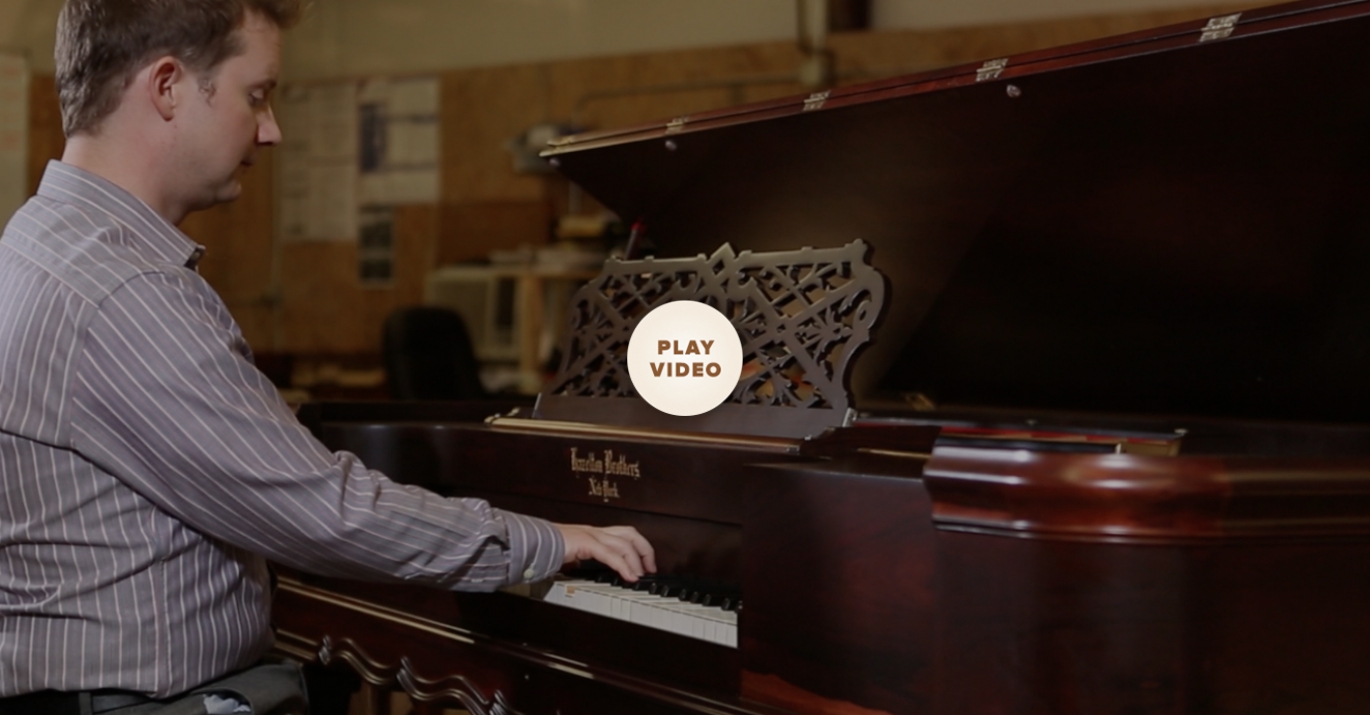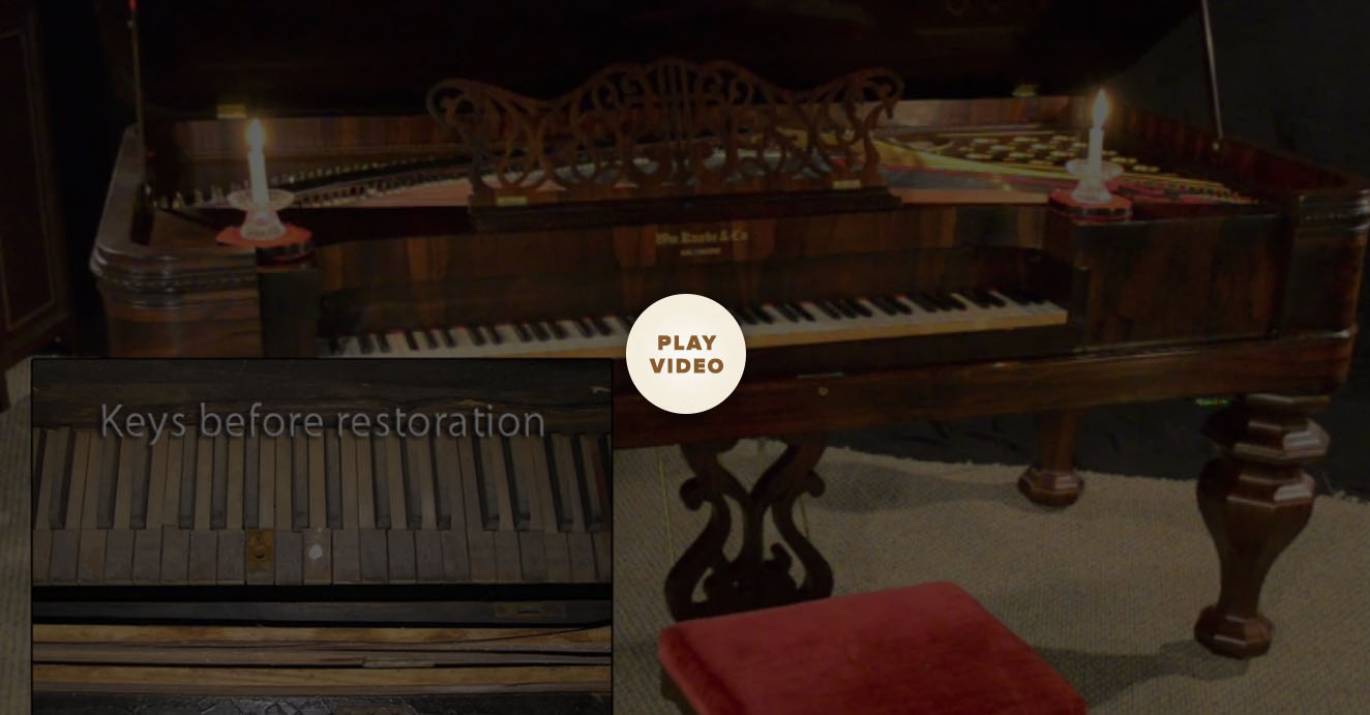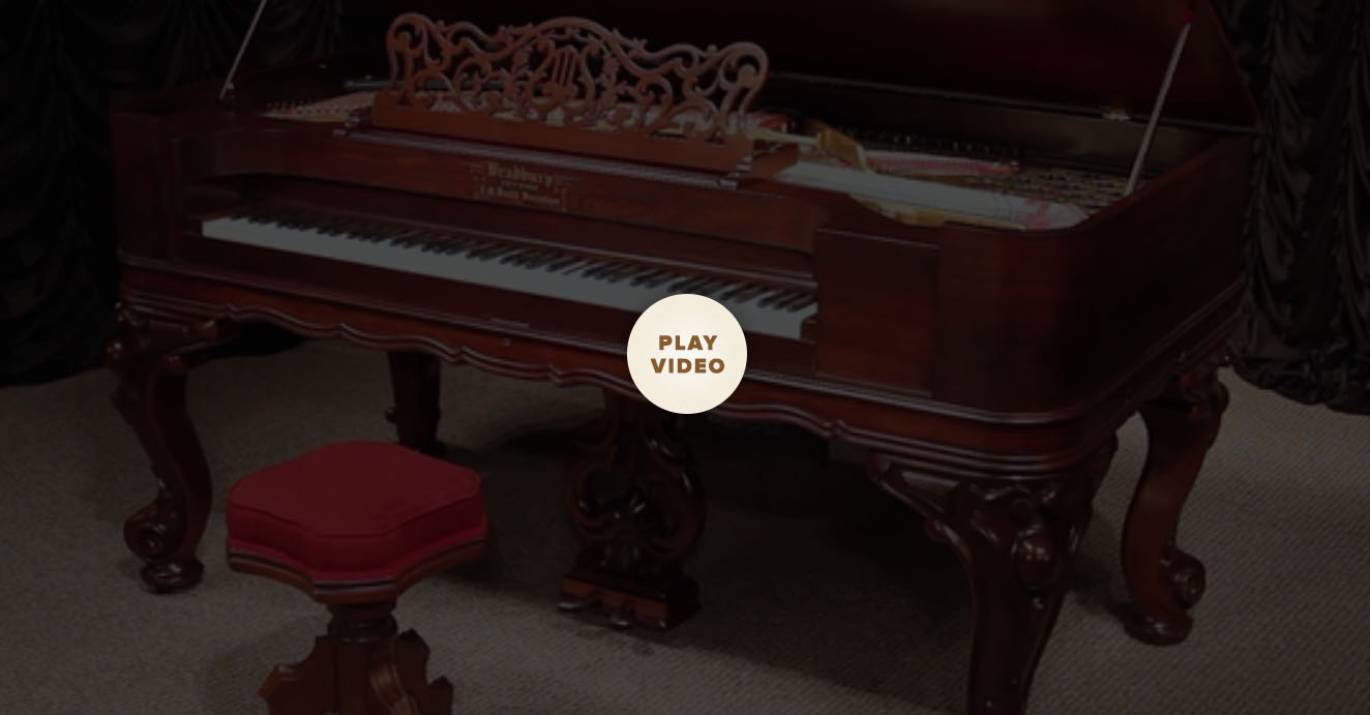This page gives detailed information about our square grand piano restoration packages. Pricing information is located below:

With the GRADE 1 SQUARE GRAND PACKAGE, the cabinet gets a high quality, grain filled lacquer finish with great pains to repair all broken/missing carving, molding, etc. All hardware is buffed, polished or plated as needed, and all decals are replaced correctly. The keyboard is restored. If ivory is present, all possible effort will be made to restore and save the ivory. If ivory is not present, faux ivory will be used in restoration unless a new ivory or bone keyboard is requested (at an additional cost). The plate is removed, repaired and re-gilded as needed. Any original internal art-work or stenciling will be saved and clear-coated if possible. The soundboard is repaired and refinished, and all decals replaced. All necessary bridge repairs are included. The piano gets new strings with traditional modern tuning pins for tuning stability, and the original pinblock is plugged and re-drilled as needed (which prevents the pinblock from being cut from the case, weakening structural integrity). The piano action is rebuilt and repaired using as many original components as possible. All felts, leather, bushings, and springs are replaced & restored as needed. The original hammers are recovered with felt and leather as necessary, and all missing hammers and action parts are replaced. The piano is then tuned and regulated to historical specifications.

The GRADE 2 includes everything listed in the GRADE 1 but portions of the action mechanisms, such as the hammers, are replaced rather than restored. Square grand hammers, shanks & flanges are custom made on a “per piano” basis, and a great deal of time and labor is required. As a result, the action duplication nearly doubles the amount of time and labor involved in a square grand piano restoration!

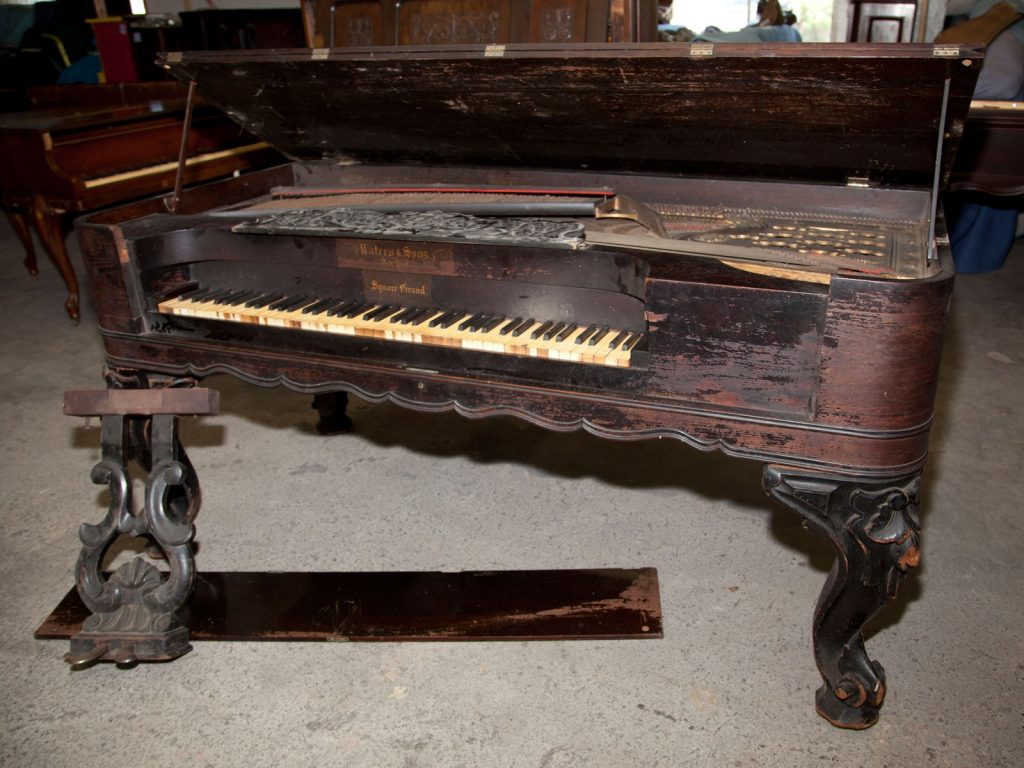
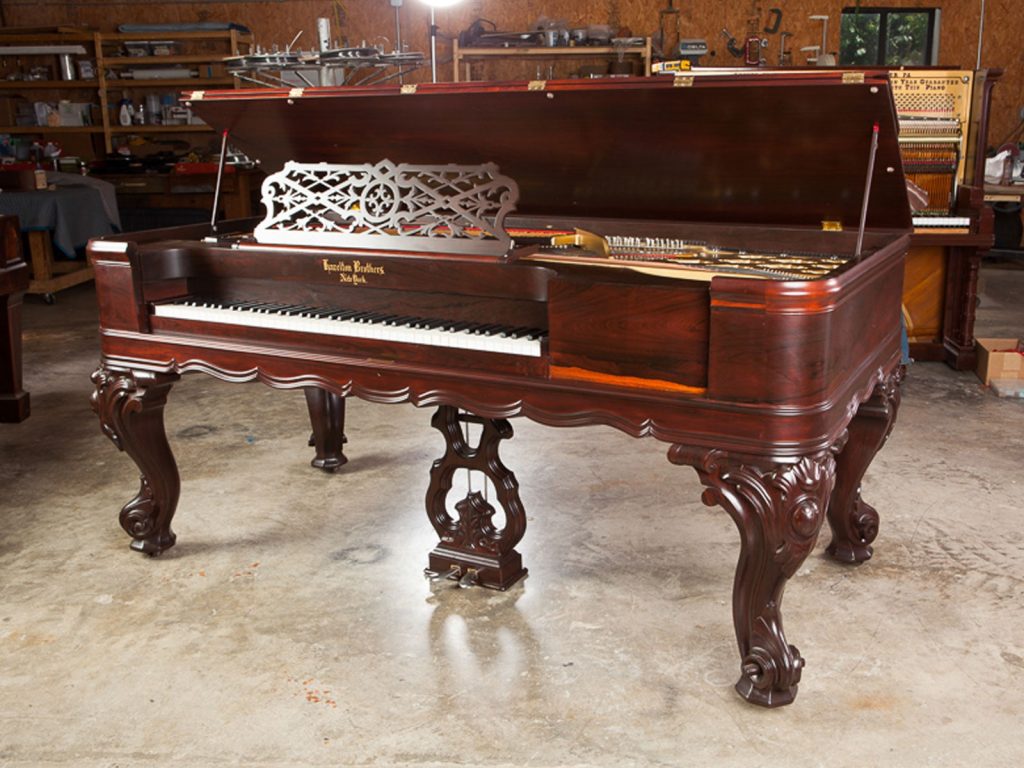

Grade 1 Package: $26,000 – $28,000*
Grade 2 Package: $30,000 and up*
*Our website grading system is set up for the majority of conventional vintage instruments we encounter (mostly North American brands). The website grading system may not apply to very early or otherwise obscure instruments (including many instruments built in European countries). Parts for many of these instruments are no longer available and must be custom made by our artisans on a case-by-case basis.
*Steinway brand pianos are generally more expensive to restore than other brands; However their values post restoration are generally higher.

Piano Stools & Piano Benches
Finishes
REPAIR: One of the most important parts of a finish is the condition of the cabinet including the carving, veneer, etc. All of our finishes include cabinet restoration so that carving, veneer and moldings are repaired/replaced as necessary. One of the most obvious weaknesses in the refinishing industry is the lack of proper repair and restoration of missing or damaged wood/carvings, etc. We often see beautiful finishes that have been applied to instruments that have had obvious poor quality repairs that stick out like a sore thumb – a finish will only look as good as the surface it is applied to. Our finishing crew is amazing at replacing missing pieces of carving and moldings.
SEMI-CLOSED PORE FINISHES: A semi-closed pore finish is a lacquer finish that is widely used in the furniture industry (and on piano finishes as well) which has a softer, satin look to it and leave the natural wood grain showing in the finish. The labor involved in this type of finish is less than the grain-filled finishes offered in the more expensive packages, which makes a very nice looking finish more affordable. In fact, some people actually prefer this type of finish over more expensive finishes saying that it looks “old world” or “antique”. Customers have the option of this finish if desired.
GRAIN FILLED FINISHES: The grain-filled lacquer finishes are traditional high quality lacquer finishes that are standard in fine finishing throughout the industry. This is a “factory new” finish which would be closest to what the instrument would have looked like when it originally left the factory. Unlike the semi-closed pore finishes, all the grain is filled with this finish creating a silky smooth solid surface. Most of our clients prefer a “hand rubbed” matte or satin finish, but we do offer gloss and semi-gloss finishes as well.
Keyboard
Internal Restoration



